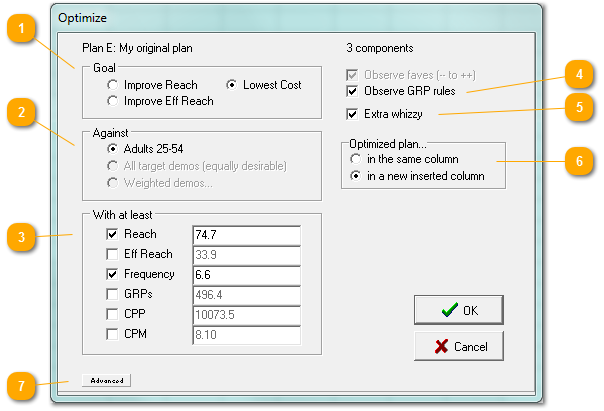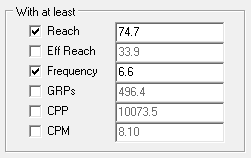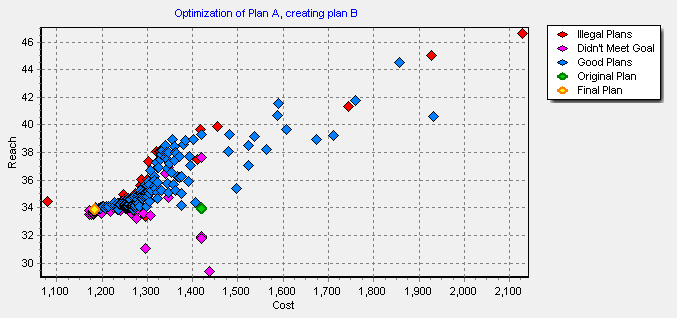Goal: Reduce Cost
TView has two broad approaches to finding a better plan:
| 1. | Find a plan that meets specified communication goals, but does so at lower cost. For that, keep reading here on this topic! |
| 2. | Find a plan for the same budget or GRP level, but which produces better reach or effective reach results. For that, read Goal: Improve Reach or ER. |

|
The first choice in this "Against" panel shows the current demo, and as a default optimization works to improve performance against that demo.
Of course, what is ideal for one demo may not be ideal for another demo. Think of the difference in a plan for Women 25-54 versus one for kids 6-11. As an option, you can ask the optimization to look at all demos that have been specified, although that may not be the "best" plan for any one of them.
The last choice lets you be precise about weighting the importance of the demos, perhaps even giving negative weights to some. See: Weighted Demos.
|
|
TView will go through a very complex process examining and revising plan alternatives that will reduce the overall budget while still meeting the goals you set here.
Check the goals that you want to attain, and provide a value for each.
|
|
Should TView apply or ignore the GRP rules that have been entered for individual vehicles? (For more about rules, see the topic, Optimization Rules.)
|
|
When checked, a chart in the upper-right corner of the progress dialog shows how the search is proceeding.
When the optimization is completed, a large version of this same chart is available on the Report tab. Here is an example:
The green marker shows the original plan, and the yellow-orange marker shows the improved plan. We can also see the plans that TView evaluated on its way, both the plans that met all of the specified rules (in blue) and those that did not (red or magenta). In this example, notice how the optimization drove the search leftward (toward lower costs) hunting for a plan that still met all requirements.
This chart is a great way to demonstrate the effort TView put into finding an improved plan, and it also convincingly suggests that the recommended plan really is met the optimization goal.
|
|
Also see: When to Optimize in Place
|





